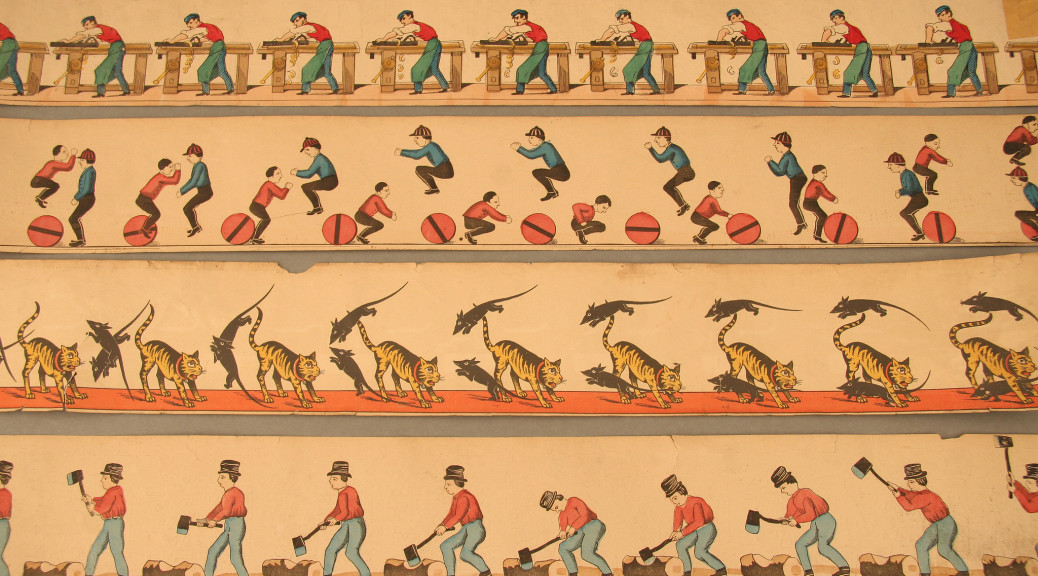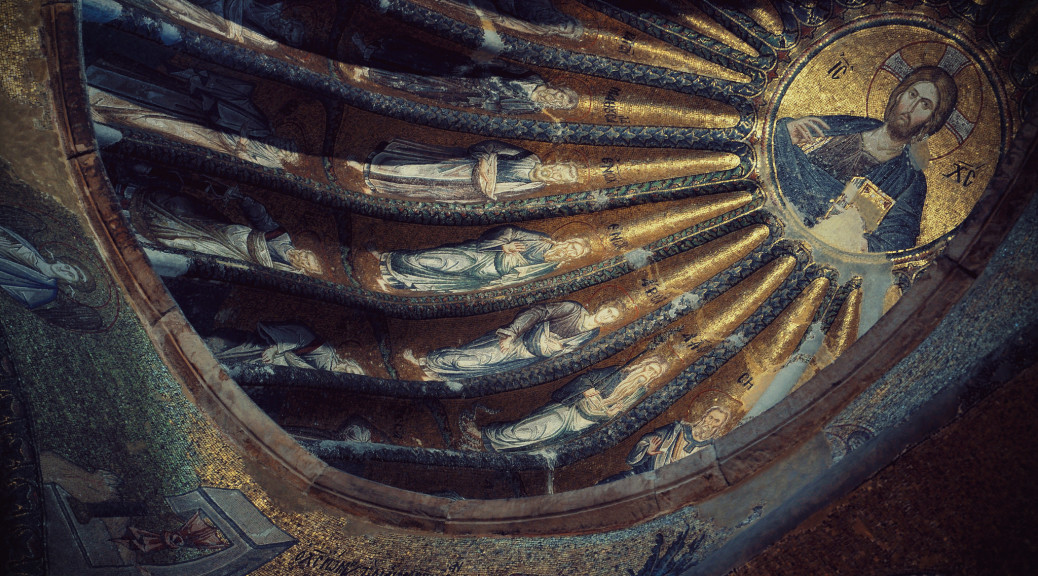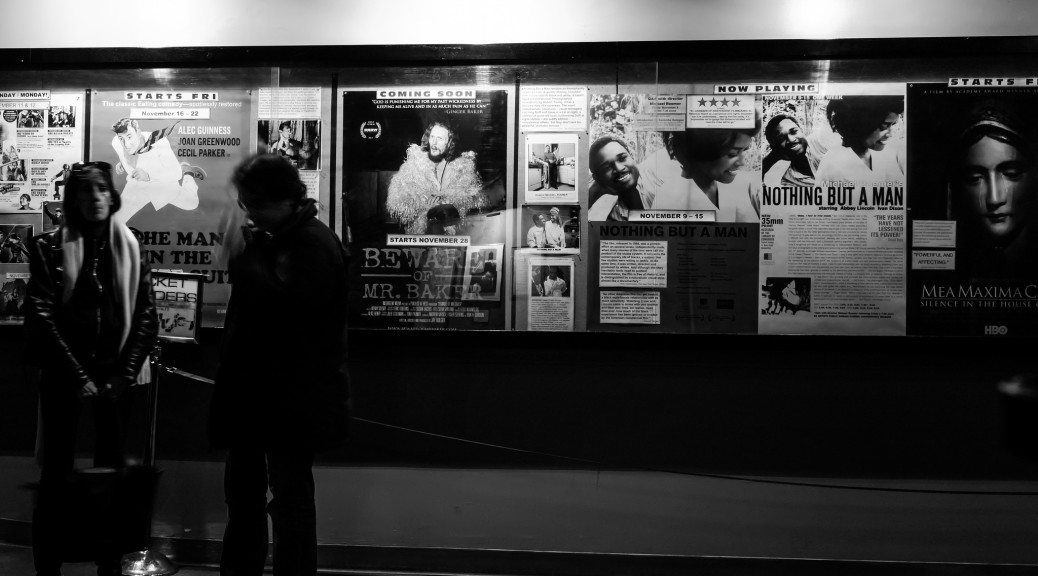Big 5:
MGM
RKO
Warner Bros.
Paramount
Fox
Little 3:
- Columbia
- Universal
- United Artists
MGM was considered “the studio of the stars” and produced a lot of high profile films often based on literary works and with A list casts.
Warner Bros. was known for it’s gangster films, including it’s James Cagney movies like White Heat.
Paramount was known for it’s comedies.
United Artist was probably the closest thing to independent in the studio era. They tended to give their artists a little more freedom. Founded by artists, for artists.
Universal produced some great early horror films.
- In 1950 the Production Code was introduced to Hollywood. The idea was to have one single organization telling Hollywood what could and could not be said, done and implied in movies. The goal from the studio’s perspective was to keep the federal government from introducing their own censorship board, to calm anger and boycotts in the Religious community and to preventing expensive recutting of their films to customize for individual local censorship boards.
In practice, however, the early years of the Production Code were quite ineffective. Studios still did whatever they wanted, and in fact released some of the most sensational gangster and sex films that had been done to date.
The League of Catholic Decency organized a selective boycott that began attracting protestants and other non-Catholic social activists. The censorship boards were as prevalent as ever, there was increased fear of Federal intervention and the leaders in MPPDA (the organization responsible for managing the Production Code) were fighting for more real power over the industry.
In 1954 the Production Code Administration came into existence. This gave the censors actual power over Hollywood. Member studios could be fined $25,000 for noncompliance. But far worse than the fine was trying to release a film with the stigma of not having a PCA seal of approval. It was simply not done.
For several decades every movie released in the US was subject to the whims of Joseph Breen and others at the Production Code Administration.
Eventually, however, the public fear that had given PCA it’s power faded away. A few movies were released without the PCA seal, and the stigma died. The PCA’s reign of terror over Hollywood ended.
MPPDA eventually became MPAA and today, in addition to its lobbying efforts, gives movies ratings: G, PG, PG-13, R and NC-17.
- Jean Renoir is considered by many the greatest filmmaker ever. His father was a famous Impressionist painter, who, who according to Jean, had a tremendous influence on his career as an artist.
Just before he was born Renoir’s aunt on his mother’s side came to live with them. She was his nanny was was largely responsible for raising him. As a child she used to take him to puppet shows, which had a major influence on him as a storyteller. She made a point of discussing the shows with him and pushing him to dislike the cliche.
At that time she was also intrigued by the recent advent of the motion picture and look little Jean Renoir to his first movie at a very young age.
During World War I Renoir was shot in the leg. For an extended period of time he was immobile and had nothing to do but watch lots and lots of movies. After the war his Father encouraged him to try his hand at ceramic making, but he wanted to try filmmaking instead.
It took some time before his films achieved any financial success. After his Father died there were some hard years during which time he gradually sold off his Father’s paintings in order to fund his movies.
Then, about ten years after he first began filmmaking, he finally began achieving success. Before too much longer his films were being watched around the world.
During World War II he enlisted to aid the war effort. He was sent to Italy to teach filmmaking in a cultural exchange intended to help preserve diplomatic relations with Mussolini’s government. Renoir left the country just before Italy entered the war on the opposite side.
Eventually he made his way to the United States, though his films there were not quite as successful as his earlier films made in France.
He also did a documentary in India at one point.
He is remembered today for a wide variety of respected films including Rules of the Game and Holiday.
Rules of the Game in particular is remembered very highly, though at the time in was critically slammed and a box office flop. It is a comedy parodying modern upper class French society. It follows a man, his mistress, his wife, and his wife’s lover and the drama that ensues as they meet each other.
- In 1946 Hollywood was at it’s height, financially speaking. That year the studios took in a staggering $120 million. Things went downhill from there.
Hollywood was able to achieve a great deal of financial success during the war time in part because there were few other options from an entertainment standpoint. Nightclubs were mostly shut down, everything from gas, to rubber, to pantie hoes was rationed, and frankly people didn’t have much else to do but go to the movies, even if the movies were bad, which they frequently were.
When the war was over, people no longer felt compelled to go to the theater even if the fare was bad. The wartime success, meanwhile, had given studio executives skewed perceptions of what the people actually wanted, leading the majors to believe the people wanted to watch drool.
Meanwhile television gained popularity, the House Un-American Activities robbed Hollywood of it’s talent, and the censors kept the studios from making sensationalist films that may have attracted viewers.
But what is generally considered the real end of the Hollywood Studio system came in 1948 when the US Supreme Court handed down their decision in the famous U.S. v. Paramount et. al. case. The studios were forced to divest themselves of their theaters and to end block booking.
The studios could no longer guarantee that their bad movies would be able to secure theatrical exhibition, and as a result they switched from making a large number of mediocre movies to a smaller number of higher profile movies. Thus began the switch to modern Hollywood and the end of the Classical Studio Era.
- The end of World War II and the fall of Mussolini’s fascism brought about new found freedom in the Italian film industry. On the other hand, with the fall of Mussolini’s government filmmakers found themselves decentralized and lacking the budgets they had previously had. The new generation of films that emerged came to be called Italian neorealism.
Roberto Rossellini’s Open City and De Vica’a Bicycle Thief are two of the most famous films of the movement.
Rossellini’s father was a construction tycoon who built Rome’s first movie theater and gave his son an unlimited free pass, allowing Roberto Rossellini a great deal of exposure to film at a young age.
Rossellini started making pro-facistisisit films when Mussolini was in power. He rose through the ranks quickly as a young filmmaker in part because of his talent, but also in part, some say, because of his close friendship with Benito Mussolini’s son.
Within months of Mussolini’s fall, however, Rossellini had begun work on Rome, Open City, a bitterly critical portrayal of Fascism from the perspective of various working class people struggling to get by during the war, including a tired buy fiery widow about to marry her neighbor, a Catholic priest secretly helping the resistance fighters and a group of children trying to do their part of fight Fascism.
Neo-realism tended to glorify working class people, or at least tell stories from their point of view. The movement tended to be critical of the aristocracy and the past totalitarian government. It tends to be gritty and raw. Rossellini and other Neorealist directors often chose to use non-actors for much of their casting, and to shoot portions of their films on location, in the streets rather than in studios.
These directors were rebelling against the so called “white telephone” films that pre-dated Neorealism, comparatively opulent but contrived Hollywood knock offs. These prior films tended to be about wealthy people, people with things like white telephones that the average Italian movie goer could never hope to afford. These “white telephone” films also tended to echo Mussolini’s social views.
The Neorealists rebelled from all of that and got back to telling stories of the people.
De Vita Bicycle Thief, about a working class father and son struggling to find their stolen bicycle so the father can complete his job, is another classic example of the neorealist heroic peasant.
Other films where less clear cut in their portrayal of the poor, but “everyday people” always tended to be the focus.
Despite it’s name, Neorealism was always a blend of the real and unreal. Most films used a combination of professional actors and non actors and a combination of footage shot on location, footage shot in the studio, and even sometimes real archival footage, such as in the beginning of Open City.
The movement has influenced modern filmmakers around the world, but showing what can be done in telling stories about real problems “every day” people deal with on a daily basis, as well as what can be done with a production approach that incorporates non-actors and filming on location.
- The French New Wave less unified and homogenous than earlier film styles, but was a collection of directors working in France around the same time who had similar influences, some of the same ideas about how the medium should progress and to some extent influenced and collaborated with each other.
Many of the most significant to the French New Wave filmmakers were first film critics. They started out writing about auteur theory and what should happen in the film industry, and when the establishment remained dispelling, they took it into their own hands.
The French New Wave was a rebellion against the cliches and limiting habits of the French film industry prior to that time.
Two of the most iconic directors of the French New Wave where Truffaut and Godard. They began as friends and collaborators but eventually drifted apart. Truffaut respected more established American directors like Howard Hawks, and, though he subscribed to the avante guard school of though, he still attempted to make films that were actually entertaining.
Godard, however, had little concerned for the taste of the audience. His films could be harsh and jarring in their editing, sound design, and plot. While many directors became more conventional over time, Godard just got weirder and weirder. Today his films are like nonsensical montages of largely found footage.
Truffaut was innovative in his use of improve. Rather than writing complete scripts, he frequently wrote only outlines and then allowed the films to evolve more naturally as he worked with the actors on set.
This approach was highly influential to subsequent generations of American directors, thirsting for a new flavor of acting and realism in film. Bonnie and Clyde is frequently cited as an example of Truffaut’s influence on American filmmaking.
- The idea behind the auteur theory is that the director is (or at least should be) the “author” of a film in the same way that a writer is the “author” of the novel. The film, therefore, should be an expression of the given director’s thoughts, feelings and views on the world.
Originally, only directors who also wrote were considered auteurs, however over time the theory was expanded to encompass directors who did not write as well.
The idea was put forth by European film critics, including several notable critics in France. They spoke highly of certain American directors like Howard Hawks but criticized other directors that in their opinion failed to really articulate their vision and views.
At the time there was some controversy as to whether the director or the writer should be considered the primary creative force behind a given film, or even if films had one creative authors at all.
In the years to come, however, the young modernist directors would help personify and solidify the idea of the auteur.
Fredrico Fellini was one director who was widely recognized as an auteur. He directed a number of notable films including La Dolce Vita (1960) and 8 1/2 (1963). He was known for his lavish and fun films, often cemi-autobiographical which were increasingly bizarre and surreal. Prior to La Dolce Vita Fellini films were still grounded in fairly straight narrative storytelling. In 1960, Fellini made his controversial La Dolce Vita about empty lust and sex among the elite. Stylistically, it was Fellini moving away from strict adherence to story arc. Three years later when he made 8 1/2, this move was solidified. 8 1/2 is about a successful filmmaker struggling to make his 9th film (it was Fellini’s 9th film) while at a sort of spa. The studio executives want him to do a big budget sci-fi film, and there are constantly people in his face irritating him.
While the film has a story, it doesn’t stick to do. Fellini frequently goes off in what seem to be tangents— bizarre side stories only cemi-related to the main story.
Kurosowa is among the most globally well known Japanese directors. He is remember for modernist classics like Roshomon (1950) Seven Samurai (1954). Roshmon was the film that truly launched him to global fame. It tells the story of several men from different backgrounds waiting out a rainstorm together and discussing a recent crime in the town. A theif reportedly killed a samurai and raped his wife.
Over the course of the film different individuals, including the dead samurai himself, each tell their conflicting perspective on what happened. It is a study in subjective realism. Even at the end of the film, we never really know for sure what happened.
Seven Samurai was a period piece about a group of noble samurai defending a village from an onslaught of attackers. It follows a number of different significant characters through the film.
Kurosowa is often cited as more western than his Japanese contemporaries, and thus more accessible to American and European audiences.
Ingmar Bergman was another of the great auteur directors of the modernist movement. He is remember for great works of film art as Wild Strawberries (1957) and Persona (1966). His films were very gritty and intimate, and often autobiographical. Wild Strawberries for example follows his difficult childhood, from tyrannical teachers, to leaving school at a young age, to living on the streets, to juvenile detention centers.
Michelangelo Antoninni is remembered for movies like L’Avventura (1960), Story of a Love Affair (1950) Il Gido (1959). L’Avventura, one of his best known films, follows a group of wealthy young people on a summer boating trip. When they stop on a rocky island to explore, one of them, Ana, goes missing. Her best friend and her lover set out to look for her. As Ana remains elusive, however, the two searchers become attracted to one another and begin an affair. It is a restless sort of movie about shallowness of the way we as humans live.
All of these directors viewed film as a serious art form. They all sought to say something with the medium in addition to (or instead of) merely entertaining. They all has personal styles and touches that they brought to all (or at least most of their films) and they all attempted to push the limits of what the medium can do.
“Film Forum lobby” photo by Susan Sermoneta



